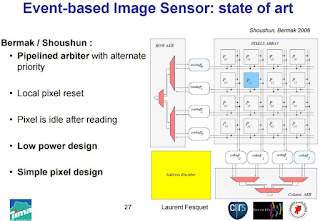ElectronicsWeekly quotes Sony history site on the yield of early CCDs:
"In January 1980, six years and three months after Iwama first gave orders to begin work on the CCD, the world's first CCD camera was produced. However, the production line's yield of viable CCD chips at this stage was poor and only one in several hundred was usable. It took twelve months to manufacture fifty-two CCD chips necessary to manufacture twenty-six cameras. As a result, each CCD was priced at 317,000 yen. Such a CCD would never realize the 50,000 yen target price that Iwama had specified.
"We can't call this a yield rate. It's more like an occurrence rate of usable chips," complained those overseeing the CCD production. The vicious "enemies" undermining their efforts were superfine dust particles that measured less than several microns and were undetectable by human eye. Clean rooms and dust proof attire reminiscent of space suits were introduced at all development and production sites. The battle against small dust was vigorous; people, machines, and every other thinkable source of dust were identified and dealt with.
After all the measures were applied, the yield rate improved enough to implement full mass production from 1983 at the Kokubu Semiconductor plant in Kagoshima."
"Once a quality problem affects an OEM customer, it requires a lot of time and effort to regain that customer's trust. Ochi and his team did have a very difficult time selling the CCD chips in 1983 when they first began OEM sales. They visited various camera manufacturers, but were turned away due to a poor track record. Sony had reduced the volume of semiconductors shipped to its customers to meet a surge in internal demand. Ochi and his team started by apologizing for this. The marketing of CCD chips was literally built on the team's sweat and tears."
"In January 1980, six years and three months after Iwama first gave orders to begin work on the CCD, the world's first CCD camera was produced. However, the production line's yield of viable CCD chips at this stage was poor and only one in several hundred was usable. It took twelve months to manufacture fifty-two CCD chips necessary to manufacture twenty-six cameras. As a result, each CCD was priced at 317,000 yen. Such a CCD would never realize the 50,000 yen target price that Iwama had specified.
"We can't call this a yield rate. It's more like an occurrence rate of usable chips," complained those overseeing the CCD production. The vicious "enemies" undermining their efforts were superfine dust particles that measured less than several microns and were undetectable by human eye. Clean rooms and dust proof attire reminiscent of space suits were introduced at all development and production sites. The battle against small dust was vigorous; people, machines, and every other thinkable source of dust were identified and dealt with.
After all the measures were applied, the yield rate improved enough to implement full mass production from 1983 at the Kokubu Semiconductor plant in Kagoshima."
"Once a quality problem affects an OEM customer, it requires a lot of time and effort to regain that customer's trust. Ochi and his team did have a very difficult time selling the CCD chips in 1983 when they first began OEM sales. They visited various camera manufacturers, but were turned away due to a poor track record. Sony had reduced the volume of semiconductors shipped to its customers to meet a surge in internal demand. Ochi and his team started by apologizing for this. The marketing of CCD chips was literally built on the team's sweat and tears."


















































